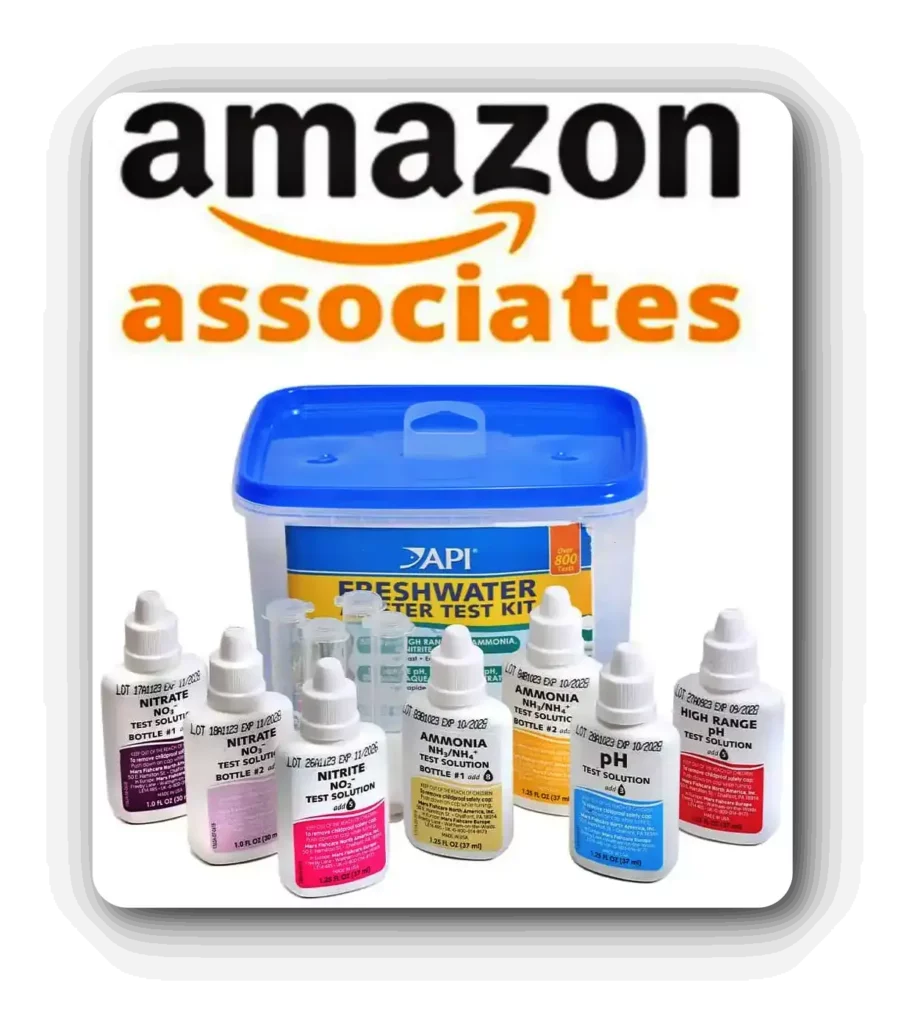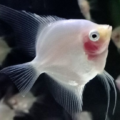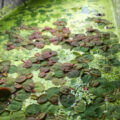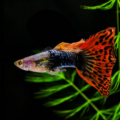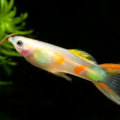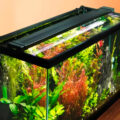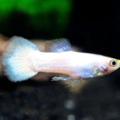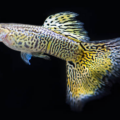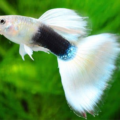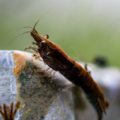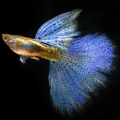A complete review of the unique Endler guppy, including tank setups, care guides, breeding best practices, and even how they’re genetically different from wild guppies.

The Vibrant Endler Guppy Fish
The popular guppy species are a great addition to any aquarium for so many reasons, including their small sizes, low-maintenance nature, and beautiful appearances.
Today, I’m going to give you more reasons to love this hardy freshwater fish by shining the spotlight on a unique variant of this species, the Endler Guppy fish.
Like other colorful guppy varieties, Endlers are physically stunning with beautiful scales and coloration. But that’s not their only defining feature. This freshwater species has a rare tapered tailfin for a guppy, which makes it smaller than other variants in the guppy family.
Quick Sidenote: Do you want to watch this article instead of reading it? Checkout the highlight video below from our YouTube Channel (Or read the more detailed article below), be sure to Subscribe For More Great Fishkeeping Content:
Well, are you ready to explore the world of the Endler guppy fish? Because you’re in for a ride!
Origins and History of Endler Guppy Fish
Let’s take a detailed look at the origins of Endler Guppy so you can know why it has its name and is distinct from other common guppies. The wild guppy species come from the South American waters, particularly Venezuela, and so do the Endler guppies.
In the late 1970s, while fish enthusiasts worldwide experimented with selective breeding and isolating genetics, Dr. John Endler, a scientist in South America, discovered this freshwater species in its natural habitat in Laguna de Patos.
Unlike the wild guppies from the deeper freshwater river basin, this variant lived in shallow, warm waters surrounded by enough vegetation to keep them hidden. Upon further investigation, Endler discovered that this species had separate genetic traits from common and wild guppies. They also have different physical characteristics and nutritional needs.
Check them out below!
Physical Characteristics of Endler Guppy Fish

At the beginning of this overview, I hinted at the beauty of the Endler Guppy’s appearance. But now I’m going to discuss its physical characteristics in detail.
Size of Endler Guppies
Endler Guppies are small fish that grow between 1.5 – 2 inches long at maturity. Unlike other wild guppies and ornamental fish, this variant doesn’t have an elaborate tail that adds to its overall size, making it one of the smallest fish for any tank.
Coloration of Endler Guppies
Its size doesn’t hinder its beauty, though. The Endler Guppy has shimmery bold colors on its scales ranging from orange to blue, and green. This colorful guppy fish often has iridescent scales that change color depending on the lighting in the tank.
Such bright lights also highlight the vibrant guppy patterns. Over the years, aquarium enthusiasts have found ways to distinguish the male from the female Endler guppies based on their looks.
Identifying Male vs. Female Endler Guppies
Forget stereotyping and what you think you know about gender differences because this method will shock you. The male Endler fish are often small with brighter bodies, while the females have toned-down colors with rounded bodies.
While the females grow up to 2 inches at full length, the males can only grow up to 1.5 inches. The good news is that preserving these unique physical traits is easy but requires time, money, and dedication on your part.
Essential Care Requirements for Endler Guppy Fish
Now, the main reason you’re here is the Endler Guppy care guide with tips on maintaining this guppy’s health.
Essential care requirements start from setting the ideal water parameters for guppies to creating the best environment, feeding your pets with a balanced diet, observing premium health care and prevention strategies, and choosing the most compatible tank mates.
Water Parameters
Endler guppies are freshwater fish, they require warm, not cold, water with 71 – 83℉, an alkalinity of almost eight pH levels, and a hardness of 5-20 dGH. Once you set the water parameters, it’s time to ensure its cleanliness.
We recommend using a master test kit like the one form amazon linked below to frequently test your water parameters.
Filtration
Use a good hang-on-back filter or sponge filter to keep your water clean and always at optimal parameters. Avoid large canister filters unless your tank is large and needs such a heavy-duty device.
Set the filter current to slow because fast-flowing waters can suck in your pets and hurt them while cleaning the water.
Always change 20 – 30% of the water weekly to remove leftover food and other kinds of dirt.
So, you can see that this small freshwater fish has so many tips for maintenance, and now you understand how easy it is to make rookie mistakes. But if you follow the essential care tips I’ve shared, you will scale through the first stage.
Stage two focuses on creating the perfect habitat aesthetically.
Creating the Perfect Tank Setup for Endler Guppy Fish
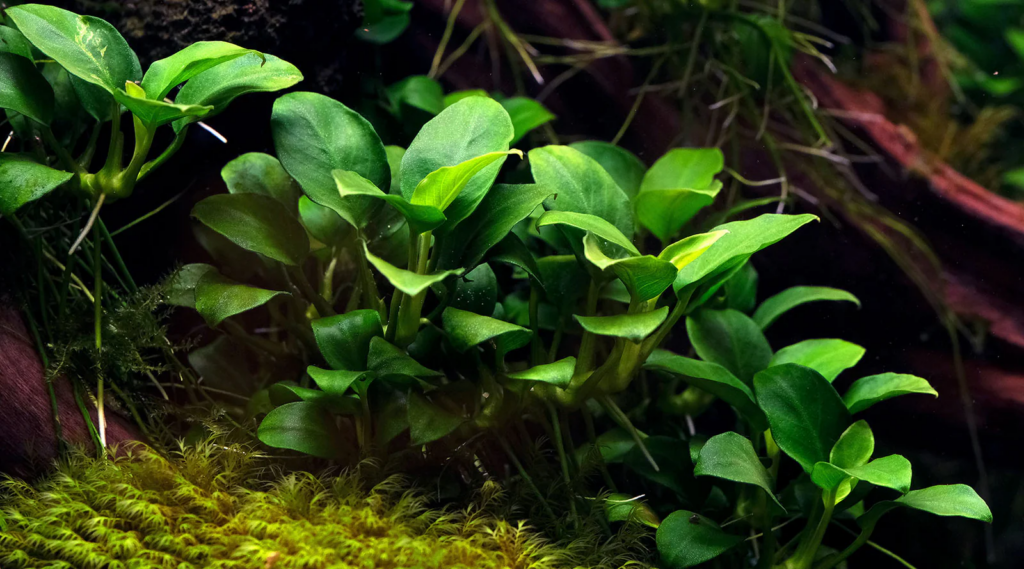
Your Endler Guppy tank setup shouldn’t end with using the ideal water parameters for your pets. You must also consider the tank’s biome and size because it affects their physical and mental health.
An ideal setup focuses on natural habitat replication so that your Endler guppy will grow at a normal pace without feeling out of touch because they’re not in the wild. You can achieve this by designing the tank with the proper aquarium decor for guppies.
Tank Size
Because Endler Guppies are small, a 10-gallon rectangular tank is okay for a single one of this species. There’ll be enough space to move and also decorate with live plants and substrates.
Decor
Use fine gravel or sand as your substrate, then plant live plants in the soil. If you prefer artificial leaves, you can also use fake silky leaf with rocks, driftwood, and marbles to complete the aesthetics of the South American freshwater.
The best part about adding live plants is that they exchange oxygen for carbon dioxide and get chlorophyll from the lighting, creating a mini ecosystem right in your tank.
Lighting
Use moderate lighting to brighten the tank which can boost your Endler Guppy’s color. You can also place it strategically behind the plants to avoid a direct reflection on your pet’s scales.
Falling short of any of the guidelines for essential care requirements is risking your Endler guppy’s health. But first, let’s discuss nutrition because your pet also needs it for growth, development, and maintaining a healthy appearance.
Feeding and Nutrition for Endler Guppy Fish

The Endler Guppy diet is different from common or wild guppies because they eat invertebrates and detritus in the wild. They’ll also eat specially formulated high-quality flakes.
To create a balanced diet when feeding vibrant guppy fish, you must also include special classes of foods like carotenoids, vitamins, and vegetables. These nutritious fish foods aid in scale vibrancy, strong organs, disease prevention, and digestion.
Some foods you can feed your Endler guppy include Spirulina, Blanched Zucchinis, and Algae matter.
For more on feeding your aquatic pets check out The Ultimate Guide to Fish Food: Pros and Cons & Best Choices!
Ideal Feeding Frequencies
Endler Guppy feeding practices are the same as those of the common guppy because when it comes to appetite and feeding habits, both species are similar. Ensure you don’t overfeed your pets and only give them food they can consume in less than three minutes.
You may restrict feeding to twice or thrice daily, depending on their growth. Feed growing fry more times than adults.
After every feeding session, remove uneaten leftovers to prevent degeneration into harmful ammonia.
Common Health Issues and Prevention Strategies
Endler Guppy’s health concerns are similar to those of other wild guppies and common freshwater fish.
The good news is that there’s always a solution for any health problem, but it’s better to adopt these Endler Guppy disease prevention strategies than spend time and money on treatment.
Here are some health management tips you must adopt:
- Always clean the water
- Remove leftover food
- Monitor your pet’s health and Behavior
If, after doing all these, your Endler guppy still falls sick, here are some health management skills that could come in handy,
Ich
- Cause: Fungal Infection
- Symptoms: White Spots on the scales and fins
- Treatment: Change the water and maintain optimal levels. Use antifungal cream.
For more details checkout our article on How to Treat Ich Outbreaks in Your Freshwater Fish!
Fin Rot
- Cause: Untreated Injuries and Contaminated Water
- Symptoms: Damaged or Discolored fins
- Treatment: Broad spectrum antibiotics
Swim Bladder Disease
- Cause: indigestion and overfeeding
- Symptoms: Difficulty Swimming
- Treatment: Fasting and eating vegetables
Maintaining fish wellness and health by keeping an optimal tank environment and feeding them good food is the best prevention care you can give your pets. But there’s more!
Breeding Endler Guppy Fish: Key Considerations

Breeding Endler Guppy Fish can either be fun or frustrating, depending on the approach you take. Because you’re reading this guide, I assure you it’s about to be a fun experience. You won’t make careless rookie mistakes and risk harming your Endler guppies again.
Endler Guppy reproduction is different from wild guppies because they aren’t livebearers. Instead, they lay eggs on flat surfaces in the breeding tank, which hatch within four to six days before becoming fry in about a week.
When selecting breeding pairs, you can isolate desirable physical traits to help preserve guppy patterns and ensure only healthy and worthy breeds.
Guppy Fry Care
After the eggs hatch, they’ll need food to survive. Your fry will first feed on their yolk sac, and then you can change their diet to include infusoria and finely powdered flakes. In a week to 10 days, the fry will start free swimming as they grow older.
Separate the stronger fry from the weaker ones to avoid predation and gently integrate them into the main tank after days of quarantining.
Choosing tank mates for guppies is easy and fun because they’re social pets, and the Endler species isn’t any different. They love schooling in groups of 5 to 10 and often become the leader of the group, especially when there are males.
This Endler Guppy behavior makes it an ideal fish for a community tank. You must, however, carefully select the tank mates to ensure peaceful fish interactions.
Find other species that can merge with Endler Guppy’s social Behavior without becoming aggressive or competitive. Some examples include:
Rasboras, Cherry Shrimp, and Neon tetras.
Avoid overcrowding, and always observe your pets for changes in Behavior when interacting with other fish or species in the tank.
Conclusion
We’ve come to the end of today’s Endler Guppy care overview. So, what have you learned today?
Adding Endler Guppies to your tank can be a conservation or preservation action because this species is slowly becoming endangered. Besides being an easy-care freshwater fish, it’s a stunner and peaceful fish, which means you’ll love having it in a community tank.
These Endler Guppy care tips are for all aquarists. Kindly share your interpretation with the rest of the aqua lovers who will come here looking for answers.


